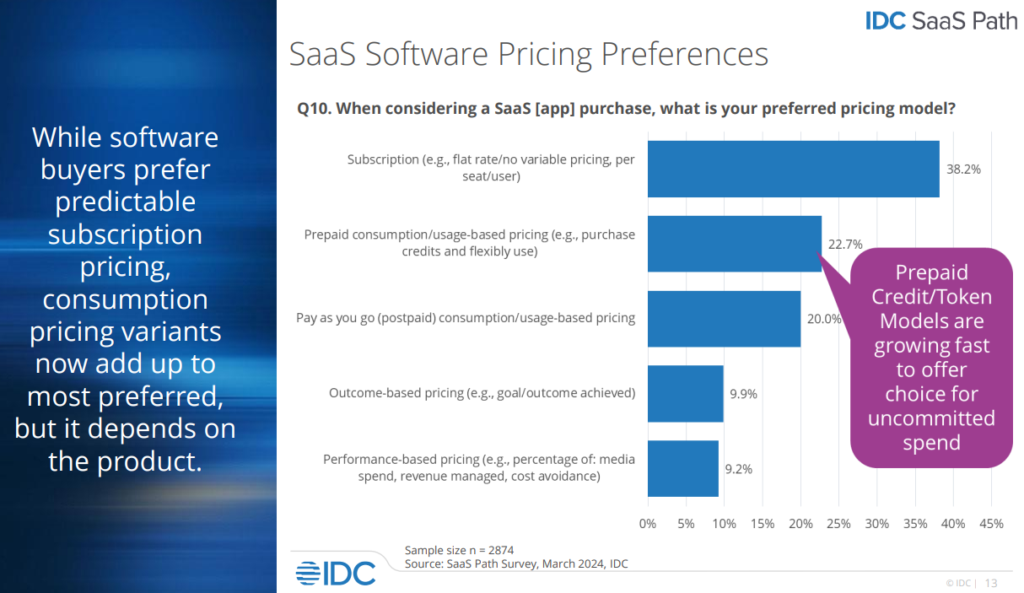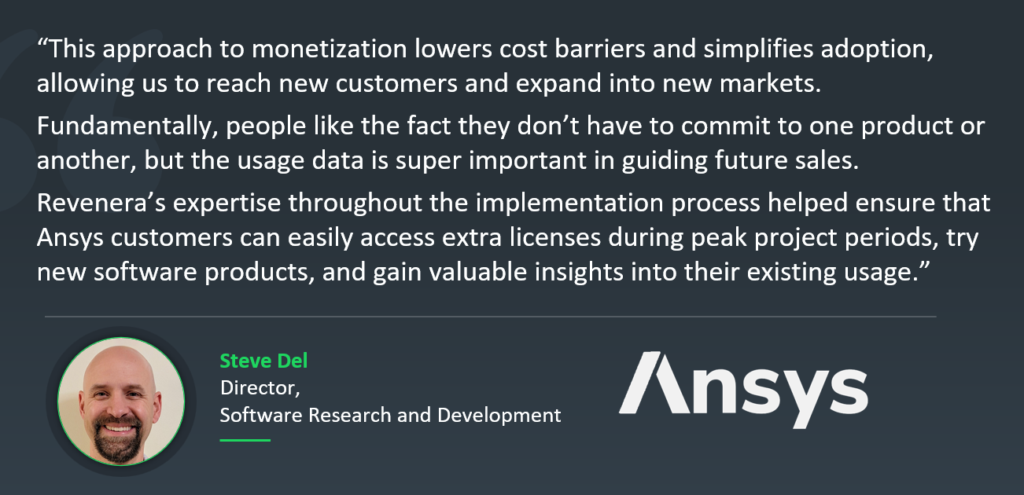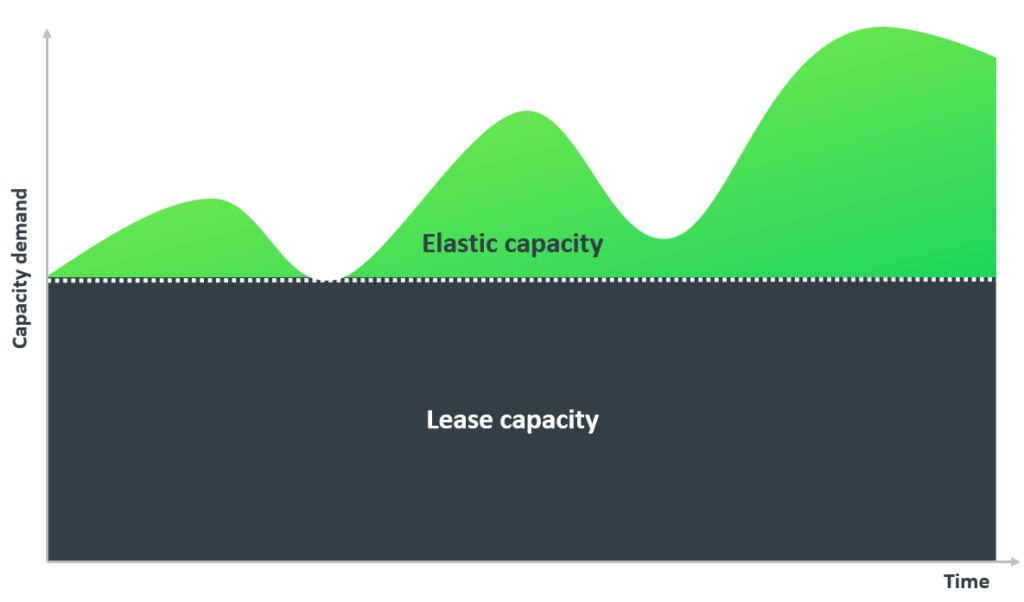Table of contents
Do not edit: TOC will be auto-generated
Usage-based pricing is reshaping how tech companies drive revenue and deliver value, allowing SaaS and AI producers to offset sky-high cloud costs while enabling greater flexibility.
As Nvidia CEO, Jensen Huang, predicts a $100 Trillion AI Token Revolution, whereby computing power is traded like electricity, AI and cloud services are increasingly moving to metered models, where consumption is tracked, priced, and billed like kilowatt-hours of energy.
With this trend in mind, Revenera’s Senior Director of Product Management, Paul Bland, recently joined me for a conversation on how to add usage-based pricing to your sales strategy, which you can watch here:
The Rise of SaaS Usage-Based Pricing
The 2025 Monetization Monitor indicates 59% of software companies expect usage-based approaches to grow as a percentage of overall revenue this year, which is a significant 18% rise from 2023 – highlighting the speed at which consumption models are being adopted.
This tallies with IDC’s research that suggests usage-based pricing is now the preferred choice for SaaS buyers, with prepaid and post-paid variants combining to take 42% of the vote, while subscriptions stand at 38%.

These results signal buyers are craving more flexibility, so having the ability to layer pay-per-use options on top of subscriptions could help you win more business and deliver greater value.
IDC also surveyed 125 SaaS producers about their usage-based pricing strategies, and while there’s a growing trend towards consumption, many still need help with the technology to implement these models, particularly with regards to tracking and analyzing usage data.
This is where Revenera’s API-driven Dynamic Monetization can benefit your organization, allowing you to:
- Sell tokens that can be used to access your digital experiences.
- Control token prices for each application or feature through a rate table.
- Make rapid pricing and packaging changes by adjusting the rate table.
- Review real-time usage data to ensure exact charging.
Through detailed usage reports, customers are able to see their consumption over time, and this data feeds back into the sales cycle – informing decisions on whether they should increase capacity, move to subscriptions, or how many tokens should be purchased in the future.
Cross-Portfolio Access and Seasonal Needs
Ansys is a leading producer of electronic design automation (EDA) solutions, and they recently joined a SoftSummit session to discuss how they’ve successfully introduced pay-per-use access to their portfolio.

Previously, Ansys faced challenges such as:
- Missed cross-sell and upsell opportunities.
- Inability to cater to small and medium-sized enterprises.
- No flexibility for seasonal needs, causing project delays for end-users.
- Unhappy customers with unused licenses due to unpredictable usage.
However, with Revenera’s Dynamic Monetization and its unique Elastic Access functionality, Ansys has realized the following benefits:
- Reduced friction in the sales process.
- Ability to easily tailor offerings to diverse customer segments.
- Clear analytics to identify upsell or cross-sell potential.
- Direct alignment between price and value for improved outcomes.
Enterprise software buyers have always struggled to balance licenses with predicted usage. However, the flexibility of Elastic Access allows Ansys customers to match capacity with fluctuating demand, ensuring they can spend tokens for on-demand access when subscription limits are met.

Download the eBook:
How to Modernize Your Software Business with Elastic Access
Usage-Based Pricing for Premium Features
Traditionally, premium features have been packaged at different levels. Customers then have to make upfront choices about whether to pay for premium functionality, or limit what they can do.
However, with Elastic Access, customers can select the package they plan to use most of the time, and buy tokens to access premium features as needed.
Usage-based pricing lowers entry barriers, allowing users to try high-level functionality without the pressure of long-term commitment. This provides additional revenue for suppliers while offering flexibility and opening the door to potential upgrades in the future.
Implementing Usage-Based Pricing Models
All analyst reports and market trend data indicates a significant shift towards usage-based pricing for SaaS and AI, and flexibility is clearly the future as producers look to mitigate soaring costs.
In this short demo, Revenera’s Solution Engineer Fellow, Jim Berthold, shows how you can add usage-based pricing to your product line:
As you debate how to monetize AI and grow SaaS profitability, Revenera’s suite of advanced monetization services can help you reduce time-to-market and deliver exceptional customer experiences.
Key takeaways:
- Dynamic Monetization removes barriers to adoption and allows producers to introduce flexible monetization models.
- The out-of-the-box Elastic Access model offers metered ways for customers to access a producer’s portfolio with complete pricing flexibility.
- Elastic Access complements hybrid models. Customer’s don’t have to commit to one product, whether on-prem or cloud, as Elastic Access bridges the licensing gap according to usage needs.
Common Questions
Why is usage-based pricing becoming popular for SaaS and AI products?
Usage-based pricing is gaining traction because it offers flexibility and helps offset rising cloud costs. According to the 2025 Monetization Monitor, 59% of software companies expect usage-based approaches to grow as a percentage of revenue this year, an 18% increase from 2023. IDC research also shows that usage-based pricing is now the preferred choice for SaaS buyers, signaling strong demand for pay-per-use options.
How does Elastic Access improve usage-based pricing models?
Elastic Access allows customers to commit to a base level of usage while purchasing tokens for additional capacity or premium features as needed. This flexibility reduces friction in the sales process, aligns price with value, and enables customers to handle seasonal demand or unpredictable usage without overpaying. It also opens opportunities for upsell and cross-sell by providing clear analytics on consumption.
What benefits do usage-based pricing models offer for premium features?
Traditionally, premium features required upfront commitments, but usage-based pricing lowers entry barriers by letting customers access advanced functionality on demand through tokens. This approach gives users the freedom to try high-level features without long-term pressure, while suppliers gain additional revenue and create pathways for future upgrades.
If you’d like further guidance on how to introduce usage-based pricing options to your SaaS and AI solutions, please contact Revenera’s expert team to schedule a discovery call today.





